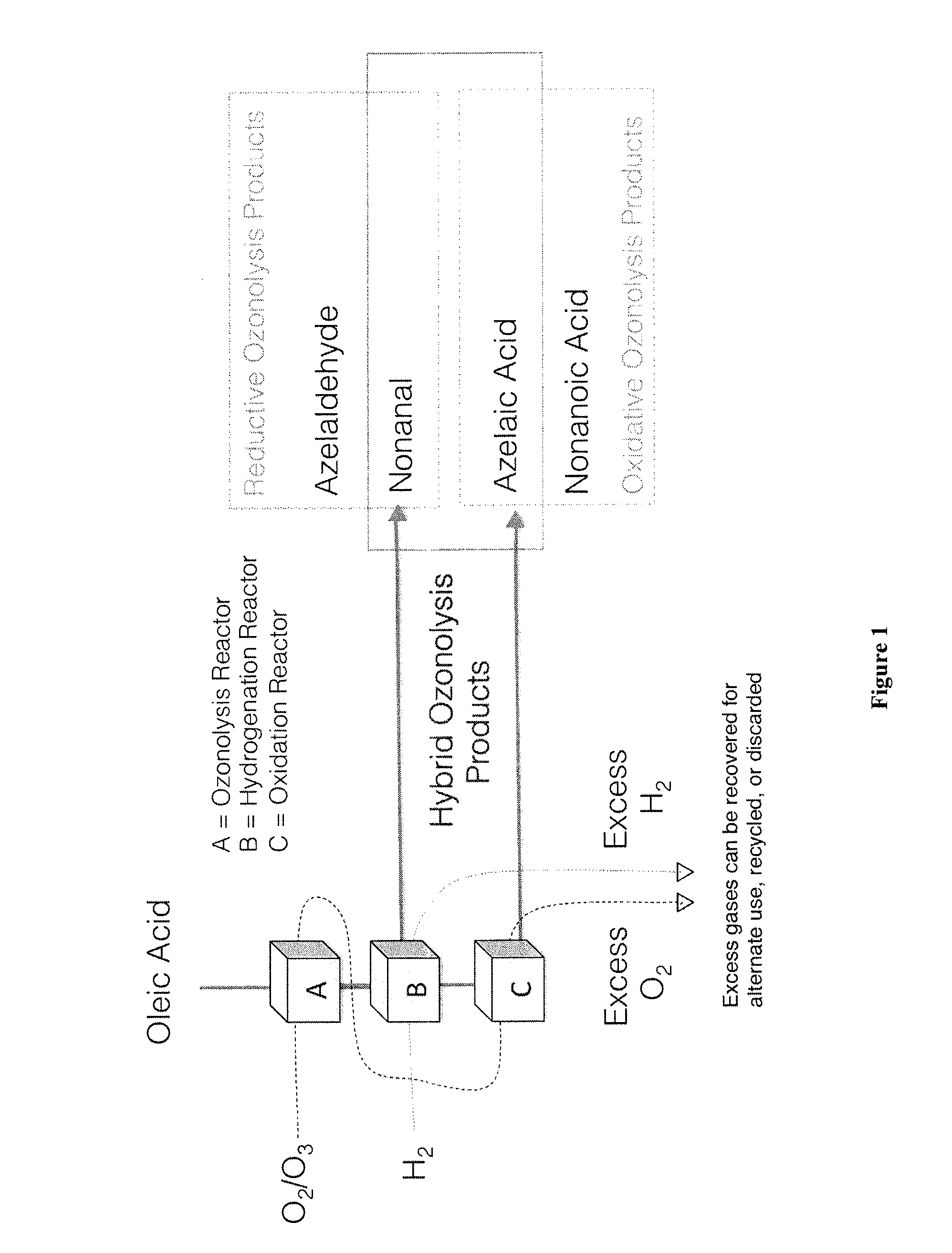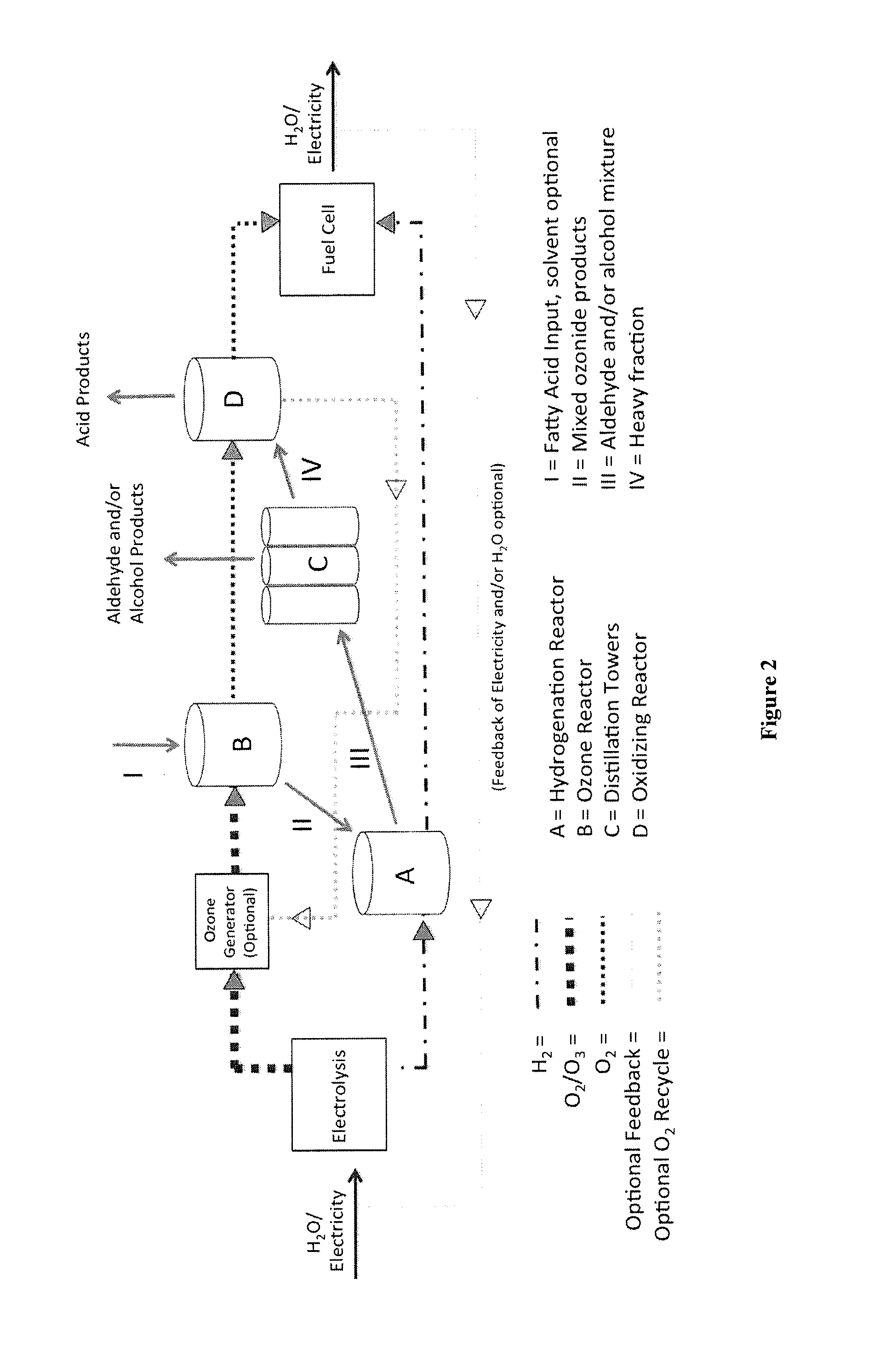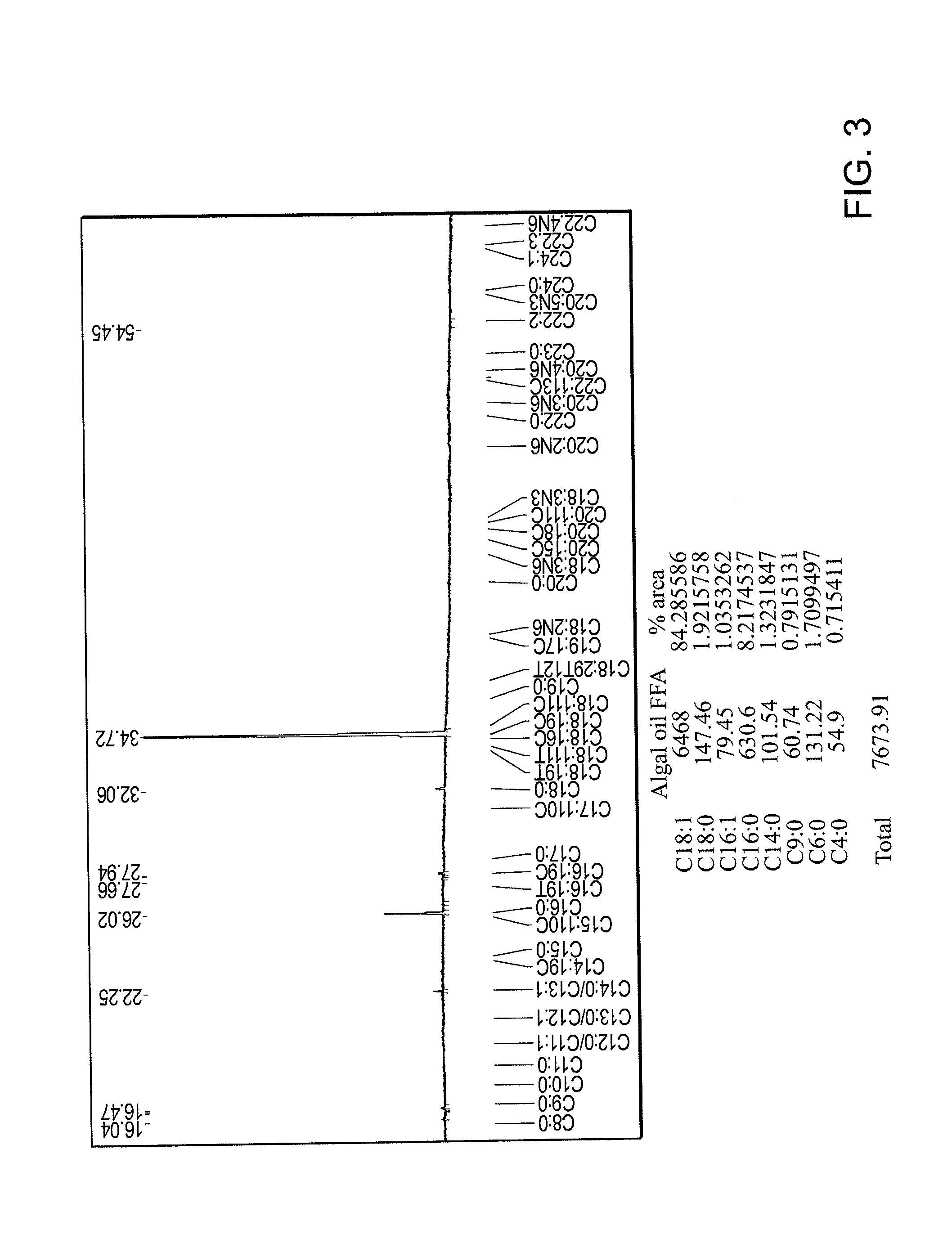Ozonolysis operations for generation of reduced and/or oxidized product streams
- Summary
- Abstract
- Description
- Claims
- Application Information
AI Technical Summary
Benefits of technology
Problems solved by technology
Method used
Image
Examples
example 1
[0111]Hybrid ozonolysis of oleic acid, for example, is performed to generate azelaic acid and nonanal. A representative product flow of hybrid ozonolysis of oleic acid is shown in FIG. 1. ω-9 oleic acid, as shown in FIG. 1, is passed through an ozone reactor as a thoroughly mixed emulsion in water. If the mixture leaving the hydrogenation chamber is biphasic in the presence of water, a coalescer and / or phase separator is used to separate the desired organic phase from the aqueous layer. The organic phase is then fractionated by distillation or by ion exchange, to give a fraction containing the desired linear alkyl aldehyde, nonanal. The balance of the organic mixture is then further distilled to generate a high purity fraction of 9-oxononanoic acid, which is then oxidized in an oxidation chamber (C), or is taken on wholly to be oxidized in an oxidation chamber (C), with diacid being recovered in high purity after oxidation by distillation, precipitation, and / or extr...
example 2
Hybrid Ozonolysis—Recycling Hydrogen and Oxygen
[0112]A hybrid ozonolysis may be performed following the schematic in FIG. 2. In the schematic in FIG. 2 of gas flow through a hybrid of the reductive and oxidative ozonolysis processes, the unbroken lines marked with I-IV and the unbroken lines with arrows directing away from chambers C and D represent the flow of organic reactants and products. In this method, fatty acid is added to an ozone reactor (B), where ozonolysis of oleic acid or any vegetable oil fatty acid (as an example only) can be initiated. The ozonated product stream is then partially hydrogenated to produce aldehydes in a hydrogenation reactor (A). The aldehydes are then distilled off in a distiller or a distillation tower (C). The remaining ozonated product stream is then oxidized in an oxidation chamber (D) to generate acids. Excess oxygen (from D) and excess hydrogen (from A) are then fed into a fuel cell to generate electricity and / or water. Optionally, excess oxyg...
example 3
Hybrid Ozonolysis of Fatty Acid Derived From Algae
[0113]Fatty acid derived from algae was used as a starting material. The composition of this fatty acid was determined using the methyl ester derivatization technique described in AOAC Official Method 969.33 Fatty Acids in Oils and Fats. Official Methods of Analysis of the AOAC, 17th edn, AOAC, Arlington, Va. USA, (2000), followed by GC FID analysis, the results of which are shown in FIG. 3. According to peak integration, the starting fatty acid was determined to be about 84% oleic acid.
Ozonolysis
[0114]300 g of fatty acid derived from algae was combined with 300 g of water in a 2 liter batch reactor and stirred at 800 rpm with an initial temperature of 20° C. Ozone was then sparged through the mixture at a rate of 6.5 liters per minute and a concentration of 75 g / m3 ozone for 100 minutes. The temperature rose during the reaction but did not exceed 50° C. After 100 minutes, the reaction mixture was purged of O2 and O3 by sparging with...
PUM
| Property | Measurement | Unit |
|---|---|---|
| pressures | aaaaa | aaaaa |
| pressure | aaaaa | aaaaa |
| temperature | aaaaa | aaaaa |
Abstract
Description
Claims
Application Information
 Login to View More
Login to View More - R&D
- Intellectual Property
- Life Sciences
- Materials
- Tech Scout
- Unparalleled Data Quality
- Higher Quality Content
- 60% Fewer Hallucinations
Browse by: Latest US Patents, China's latest patents, Technical Efficacy Thesaurus, Application Domain, Technology Topic, Popular Technical Reports.
© 2025 PatSnap. All rights reserved.Legal|Privacy policy|Modern Slavery Act Transparency Statement|Sitemap|About US| Contact US: help@patsnap.com



